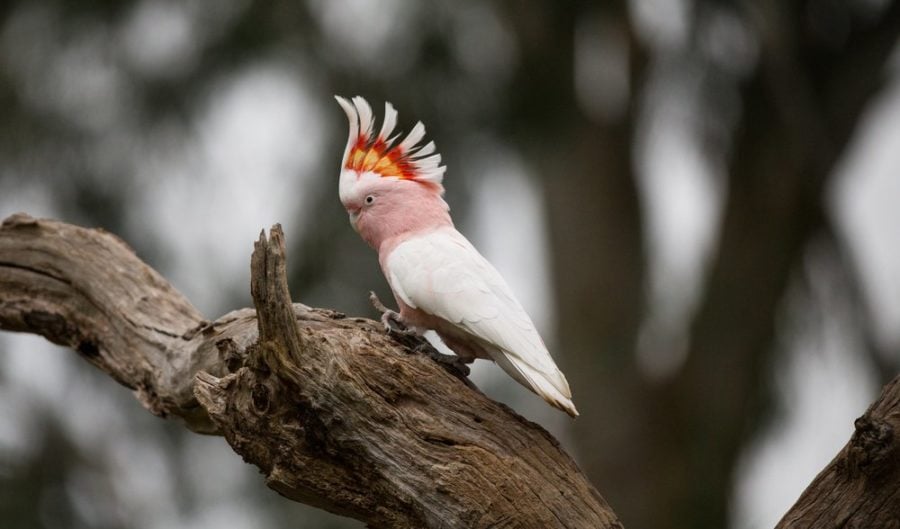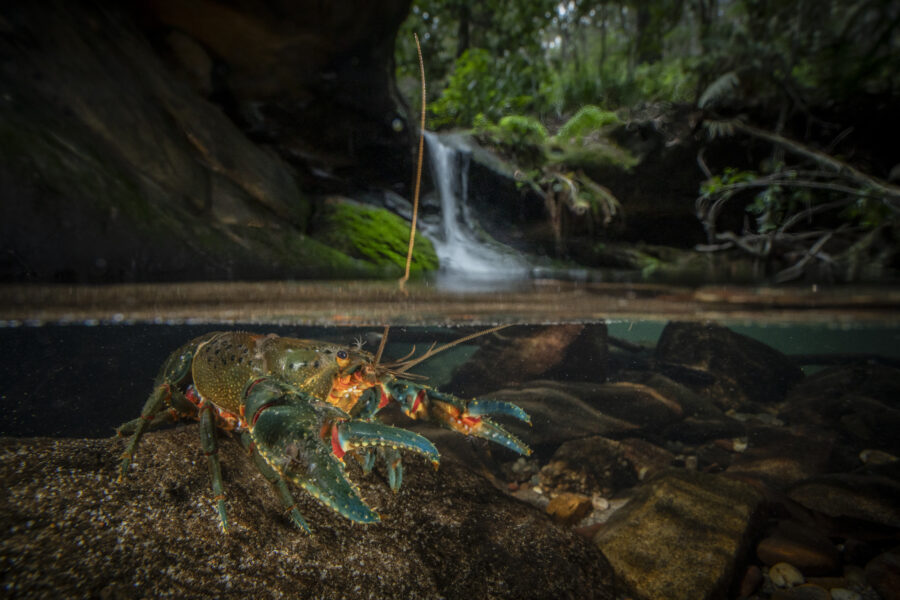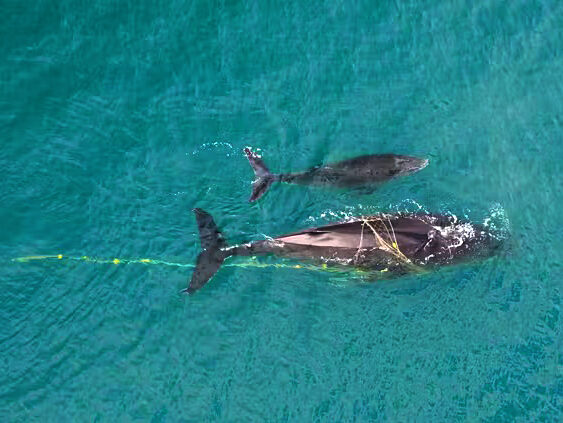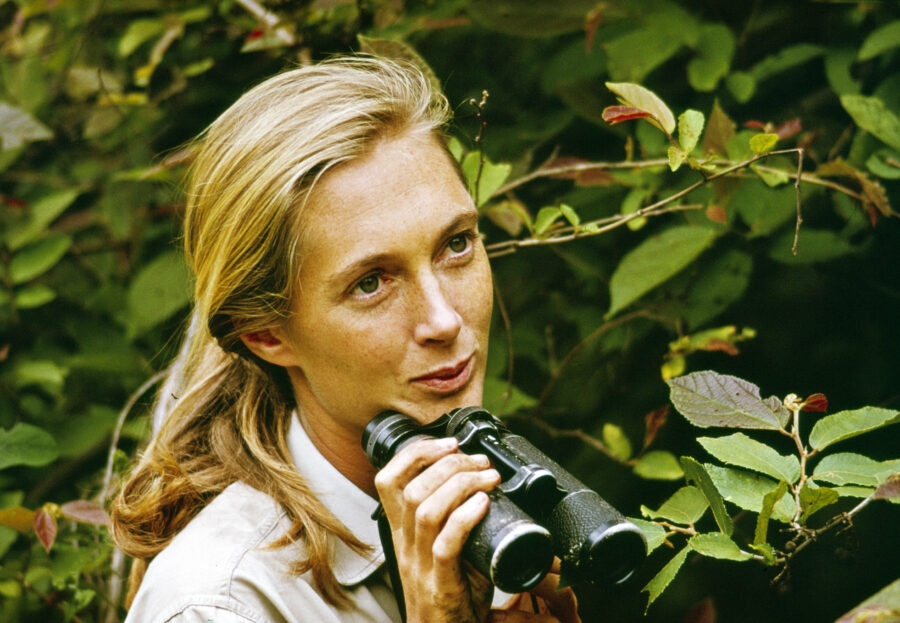Major Mitchell’s cockatoos in terminal decline in Victoria

VICTOR HURLEY pulls his four-wheel-drive up next to a solitary tree, its barren, lifeless limbs stretching dramatically upwards. The surrounding mallee landscape is vast, the sky above is wide and clear. Victor, an ecologist who has spent a lifetime studying birds, climbs out of the vehicle, reaches for a pole with a video camera artfully attached to its tip and extends it 10m above him until it rests at the opening of a hollow in the tree. He’s searching for signs of Major Mitchell’s cockatoo, a bird pioneering ornithologist John Gould once described as “the most beautiful parrot in the world”.
Although widely distributed across arid and semi-arid inland areas of Australia, the species is in serious decline in Victoria, where it’s been listed as vulnerable since 1988. The state’s most significant remaining population is at Pine Plains in Wyperfeld National Park, 3570sq.km of parkland in the heart of mallee country about 400km north-west of Melbourne. But even here, it’s only just holding on; numbers having slid from 62 breeding pairs in 1998 to just 20 in 2017, with a 30 per cent decline in the past year alone.
See more: Urban birdwatching guide to Melbourne
Victor and his assistant, fellow ecologist Louise Durkin, peer at a monitor, assessing the contents of the deep hollow. Like Victor, Louise is here on her own time. Victorian government funding for Victor’s monitoring program, which had been underway for 17 years, was cut three years ago. It now operates on the generosity of a few concerned individuals.
The tree they’re monitoring is a 120-year-old slender cypress pine (Callitris gracilis), the only tree species in which majors nest at Pine Plains. (In two decades, Victor has only ever once seen a major nest in any other tree species here.) It’s no surprise then that the birds’ alarming decline at Pine Plains is intrinsically linked to the local decline of slender cypress pines.

(Image Credit: Sompreaw/Shuttershock)
From the mid-1800s, settlers harvested the tree’s soft, termite-resistant wood for use as fence posts, house stumps and flooring at an alarming rate. Overgrazing by cattle, rabbits and goats exacerbated the problem, helping to deplete the surrounding semi-arid woodlands by some 80 per cent and, crucially, effectively halting the recruitment of new slender cypress pines. As a result, an entire generation of the trees is absent.
To make matters worse, the cockatoos face competition for the few available hollows from galahs, for which the population has recently increased locally, and feral European honey bees.
“Majors are typical of a lot of threatened species in that they’re not aggressive,” Victor explains. “They’re like the wimpy kid in the schoolyard. They can’t be bothered getting into a blue with anyone.” A trial removal of galahs from Pine Plains in 2007 and 2008 saw majors increase by 40 per cent.
See more: Native animals should be reschristened with their Aboriginal names
Victor and Louise have made their assessment at the tree; this hollow is devoid of majors. As the pair moves on to another tree, it becomes clear that Victor knows virtually every cypress pine in the area. “We call this one Mott’s after the ranger who happened to be present when workmen were grading the vehicle track in, more than a decade ago,” he says. “He asked them to divert the track just slightly to the left, to save the tree.”
Parks Victoria is doing what it can to reverse the environmental damage done to the surrounding area since European settlement. It has overseen the planting of more than 1.6 million seedlings (including cypress pines) and the revegetation of 4475ha of semi-arid woodland across Wyperfeld and two other mallee national parks: Murray-Sunset and Hattah-Kulkyne.
Grazing pressure from feral animals is at an all-time low after decades of management, and the cypress pines are surviving and reproducing for the first time in more than a century.
See more: How to attract your favourite birds to your garden
However, despite all these admirable ecological successes, sadly, the short-term future looks grim for this population of Major Mitchell’s cockatoos. The species has a preference for trees that are, on average, 170 years old, and the 20 breeding pairs that remain at Pine Plains can’t wait until any of the new seedlings grow and mature to that sort of age. Nearly all of the trees with hollows large enough for the cockatoos to nest in are now dead and each year a few more fall to the ground.
“If the current trajectory continues, this population will decline to single-figure breeding pairs by 2024,” Victor says. He refuses to be drawn on what happens after that.
It’s clear that what’s needed is some sort of bridge between the habitat to which this population of majors is clinging, and the long-term revegetation work that Parks Victoria is carrying out. In the past, the solution to a conundrum such as this has been to provide artificial hollows in the form of nesting boxes. However, when standard nest boxes were installed in Pine Plains in 2009, all of them were occupied by galahs within two years.

(Image Credit: Annette Ruzicka)
Five years later, the situation became critical when a bushfire ravaged Pine Plains, incinerating 93 per cent of the hollow-bearing trees. In the aftermath, Victor began an innovative project to create artificial hollows in remaining trees. A project he’d completed previously, recording detailed dimensions and characteristics of hollows favoured by majors, proved crucial for that. He worked with arborists and carpenters using chainsaws, angle grinders and woodworking tools to create and restore 25 hollows. He even published a manual illustrating the techniques he’d developed so others could use them in species-recovery projects elsewhere.
By the following spring, majors had bred successfully in four of the new hollows; the others were occupied mostly by galahs, as well as kestrels and barn owls. Victor concluded that further galah culling would help increase the number of breeding majors in new cavities.
See more: Should you be feeding birds? The answer isn’t so simple
At $1000 each, including construction and monitoring costs, the hollows are far cheaper than standard wooden nesting boxes. They also last longer, cost less to maintain and are far less visible to poachers, another key threat with majors fetching up to $15,000 each on the black market.
So, with Victor’s inexpensive solution ready to make a real difference to Pine Plains’ Major Mitchell’s, does their future look brighter? Not quite yet. Unfortunately, funding to continue building the cavities that could secure the population has dried up. But Victor is hopeful the philanthropic community will be moved enough to act.
With the day’s work done, Victor and Louise amble across the plain. The ancient tree they’ve just surveyed stands alone, outwardly lifeless, but life-giving for the cockatoo chicks sheltering within. On the ridge line behind, a cypress pine stand glows green in the dying light, a new generation offering hope. A lone Major Mitchell’s cockatoo circling above ignores these saplings, where it can find no home, alighting instead in the solitary gnarled tree standing sentinel against the fading sky.
READ MORE:
- Help save the Major Mitchell’s cockatoos in Victoria
- Top 10 birdwatching spots in Australia




